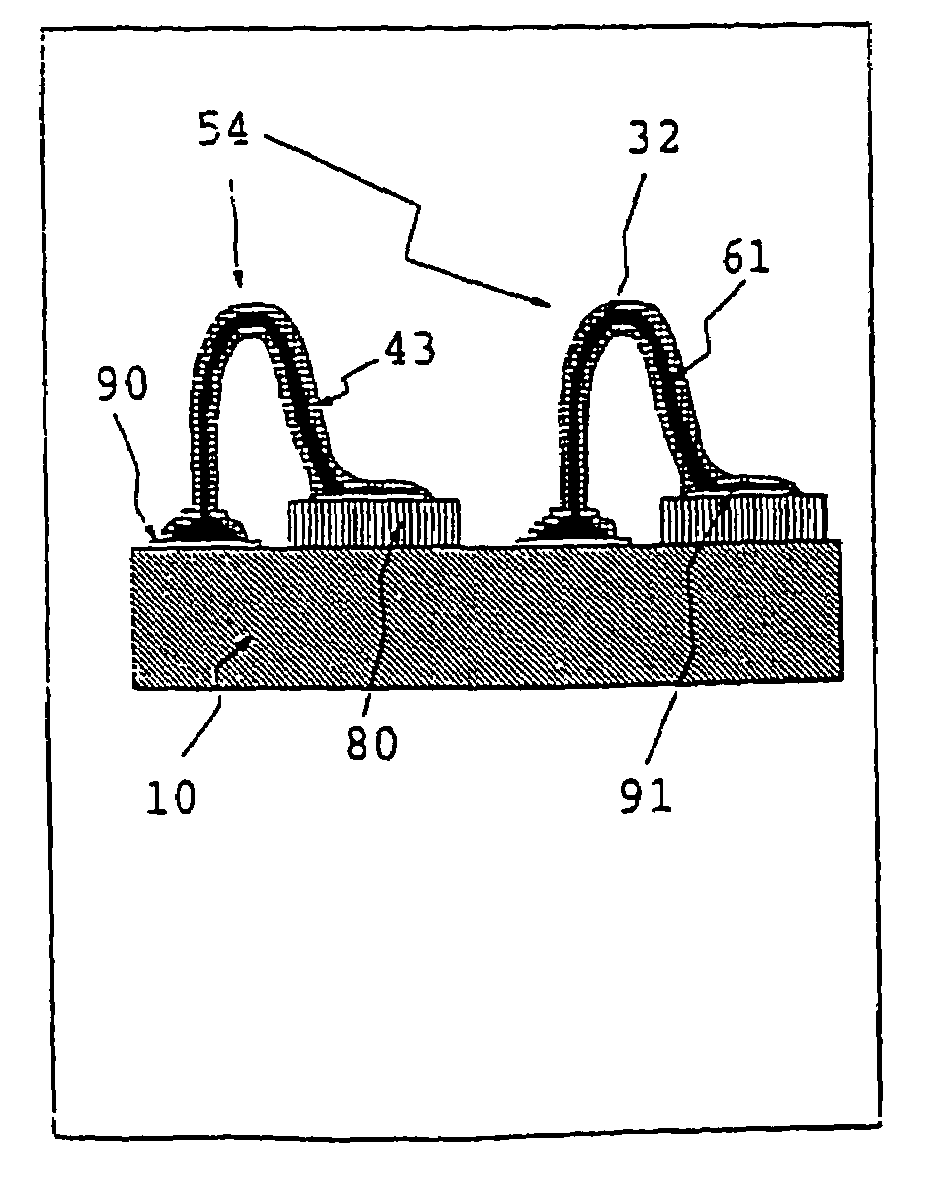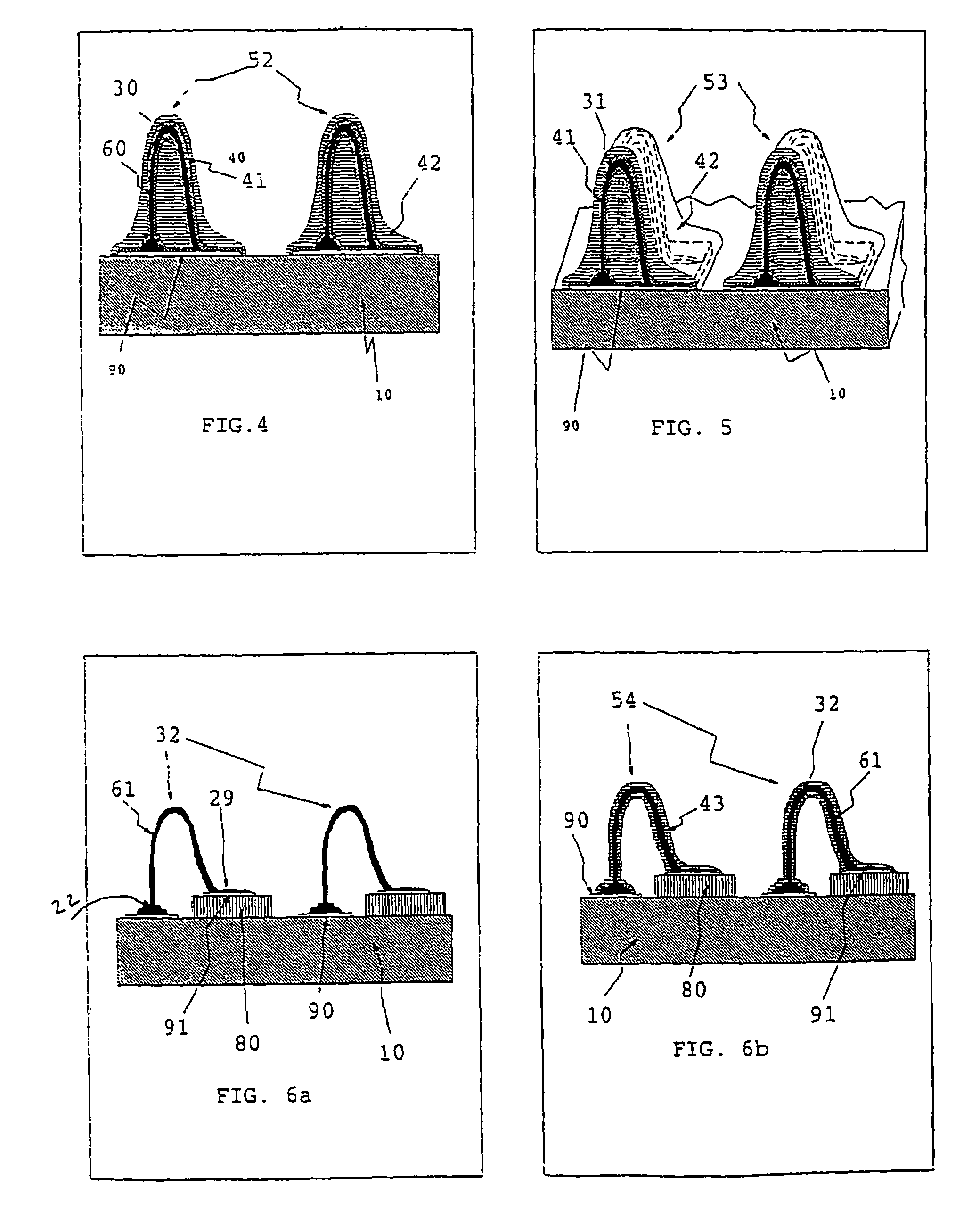Contact structures and methods for making same
a contact structure and contact technology, applied in the field of electronic assemblies and testing, can solve the problems of high-speed wirebonding equipment that the reaction between copper and solder at elevated temperatures is undesirable, and the high-speed wirebonding equipment cannot handle a 30 mil diameter wire, etc., to achieve the effect of low cost and high volum
- Summary
- Abstract
- Description
- Claims
- Application Information
AI Technical Summary
Benefits of technology
Problems solved by technology
Method used
Image
Examples
Embodiment Construction
[0048]The method of the present invention relies on wirebonding equipment to produce controlled aspect ratio and shape wire skeletons, which are subsequently overcoated with a desired material in order to produce a required set of properties for protuberant electrical contacts. FIGS. 1A and 1B depict use of a ball-and-wedge wirebonding machine to form a wire skeleton. More detailed descriptions of this and wedge-wedge wirebonding methods, commonly used in the semiconductor industry for interconnecting silicon devices to packages, can be found in Electronic Packaging and Interconnection Handbook edited by Charles A. Harper, on pp. 6.62–6.64 and 7.28–7.30. FIG. 1A illustrates a capillary 1, with an open clamp 2, containing an end portion of a continuous wire 20 with a ball 21 formed at its feed end below the capillary tip. The ball 21 is brought in contact with a contact carrying terminal 90 on top of (or otherwise contained within) a substrate 10. As a result of application of pressu...
PUM
| Property | Measurement | Unit |
|---|---|---|
| diameter | aaaaa | aaaaa |
| diameter | aaaaa | aaaaa |
| tensile strength | aaaaa | aaaaa |
Abstract
Description
Claims
Application Information
 Login to View More
Login to View More - R&D
- Intellectual Property
- Life Sciences
- Materials
- Tech Scout
- Unparalleled Data Quality
- Higher Quality Content
- 60% Fewer Hallucinations
Browse by: Latest US Patents, China's latest patents, Technical Efficacy Thesaurus, Application Domain, Technology Topic, Popular Technical Reports.
© 2025 PatSnap. All rights reserved.Legal|Privacy policy|Modern Slavery Act Transparency Statement|Sitemap|About US| Contact US: help@patsnap.com



